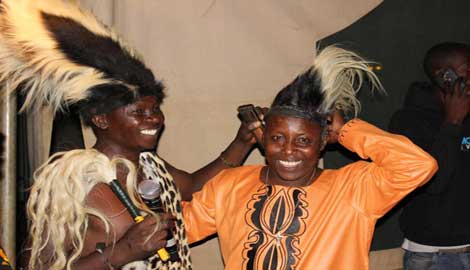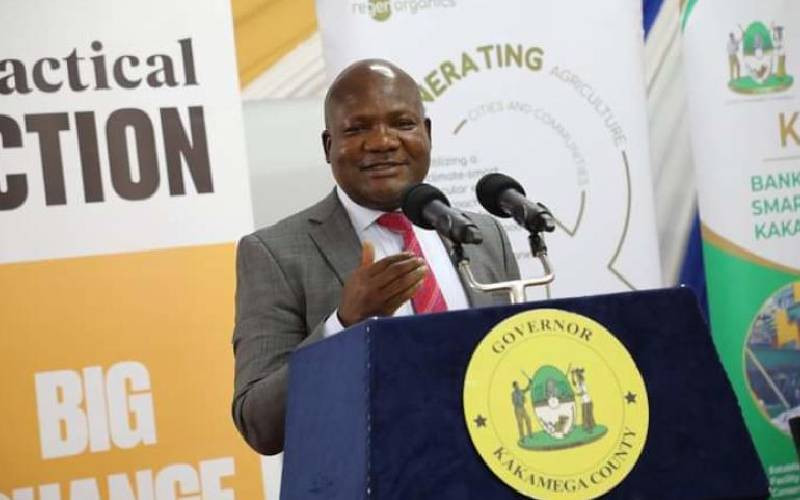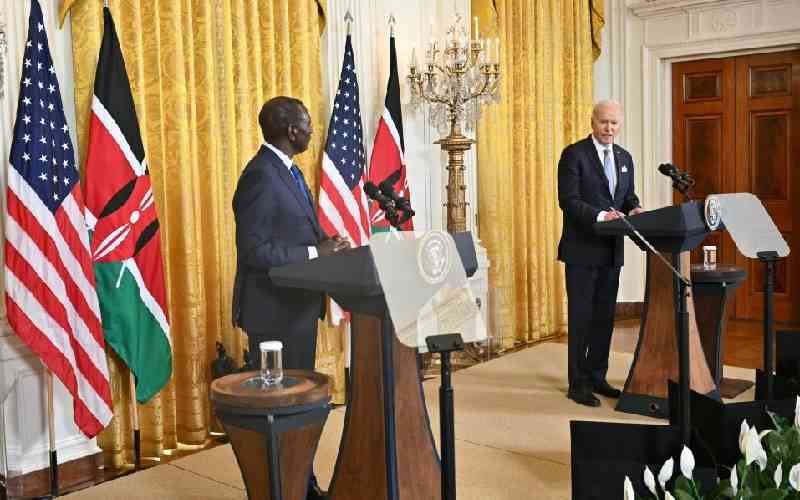Last week, Chief Justice Willy Mutunga, made history of a kind. While emphasising the need for the media and the Communications Authority of Kenya to strike a deal on digital switch dispute, he quoted Ken wa Maria’s hit song Fundamentals.
It takes the humility of Dr Mutunga to voice such glowing compliment on an art that has long been considered a domain of social rejects with no intellectual substance to give society.
This was probably the first time that such references have been made in a court ruling or any other situation of high level Government and tells the growing esteem of Kenya music across several levels of society.
It comes at a time when Kenyan music is enjoying a buoyant moment and is at its highest ever both in diversity and economic potential.
But this is only in the art form and the infrastructure remains cluttered unable to harness the dynamism of the music arena.
As an art, Kenya music has evolved into a multi-genre facet that is severely encumbered by the media’s failure to profile this rich menu.
Although there is high music content on various electronic stations and print media, the music has been grouped into regions; denying the public a pool where all music is played free of social and other prejudices.
Obviously, the urban youth music enjoys higher stakes, which has in turn stifled growth of other potent genres whose only shortcoming is their perceived lack of up-market appeal.
It is the story of Nairobi apartheid, where all music activity is decided in Nairobi and by programmers who have no knowledge of the true identity of the country heritage or consumer trends across the board.
This form of exclusion continues to consign our best music to peripheries of public domain and has clearly choked development and investment in the Kenyan music scene. Tragically, the media has continued to perpetuate the foreign consumerism that has skated around home-grown music in favour of external genres and preferences.
One sees this prejudice in the way artistes like Ken Wa Maria has been treated and his song, with all its potency for creativity and the public attention that it garnered, is largely a product for tribal stations despite its obvious mainstream appeal.
There is also the case of Jacob Luseno’s hit Mukangala, which has been confined to ethnic stations even with its great potential for crossover radio.
The same can be told of Tony Nyadundo, who raised the bar on local music with his Ohangla, but was mostly heard at the exhibition halls and not in our stations.
These same stations have no problem featuring Oliver Mtukudzi in his native language, but when it is a Kenyan hit, the story changes. For local music programmers, the West African kora or Southern African mbira is great for the development of African music but not so for the Nyatiti or bung’o that are native to Kenya.
All this is based on the misconception that urban populace cannot appreciate our own music; which is fallacy in the media fraternity.
Stay informed. Subscribe to our newsletter
The reality is that many youths in Nairobi appreciate the essence of having roots but are being denied by people who are culturally illiterate and lack true appreciation of music. Yet, the trend in most other societies has been to provide platforms for all genres of music; old and new.
I remember an occasion at Cincinnati, USA, where young teens were playing at a music festival.
Ordinarily, I would have expected them to play hip hop or other forms of music of their generation. But to my surprise, many of them were well versed on Hillbilly music of the 30s as they were on pop music.
Off the shelves
The lesson is that music should never be phased out or be allowed to be out of circulation, because, the time pendulum has a way of restoring the old to vogue, and all genres have to be allowed to co-exist both as reference to the country’s history and an object for music growth.
Travellers to South Africa who visit the Moods Music Store at the Oliver Tambo International Airport notice the deft display of music at the store where it is listed by genre and by era to create a historical perspective.
But Kenya has been time locked by a ‘yoyo’ culture that is both snobbish and uninformed and are not consumers of music.
There seems to be a perception of what Nairobi and the elite would like to listen to; but this has no factual reference and becomes the prejudice of music programmers blinded by class bias.
Charts like the one compiled by US Billboard monitors all aspects of the music market including volumes, demography and social factor to reflect the movement in different genres and the music market.
In Kenya, all is left to the discretion of the programmer who dictates what Djs play without any concrete data from the music market.
 The Standard Group Plc is a
multi-media organization with investments in media platforms spanning newspaper
print operations, television, radio broadcasting, digital and online services. The
Standard Group is recognized as a leading multi-media house in Kenya with a key
influence in matters of national and international interest.
The Standard Group Plc is a
multi-media organization with investments in media platforms spanning newspaper
print operations, television, radio broadcasting, digital and online services. The
Standard Group is recognized as a leading multi-media house in Kenya with a key
influence in matters of national and international interest.
 The Standard Group Plc is a
multi-media organization with investments in media platforms spanning newspaper
print operations, television, radio broadcasting, digital and online services. The
Standard Group is recognized as a leading multi-media house in Kenya with a key
influence in matters of national and international interest.
The Standard Group Plc is a
multi-media organization with investments in media platforms spanning newspaper
print operations, television, radio broadcasting, digital and online services. The
Standard Group is recognized as a leading multi-media house in Kenya with a key
influence in matters of national and international interest.









